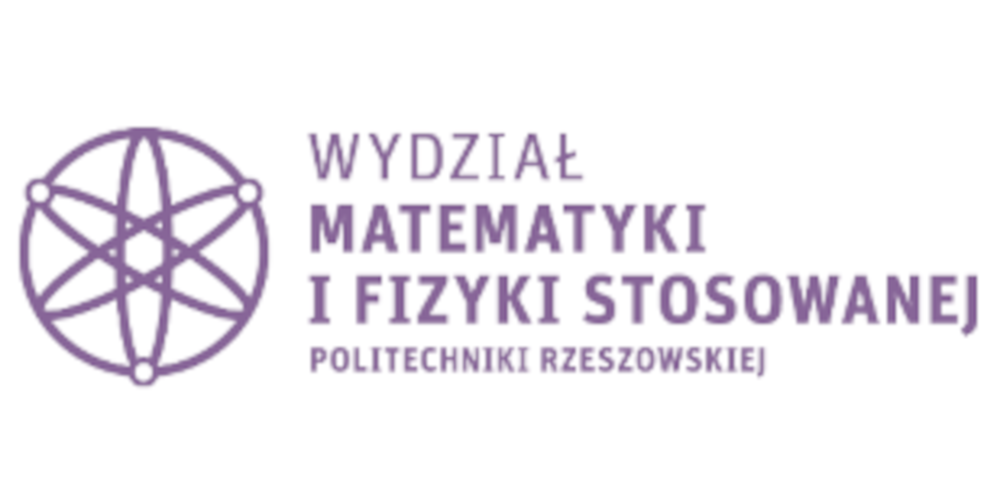

Physical Methods in Technology and Medicine
Some basic information about the module
The aim of studying and bibliography
The main aim of study:
To acquaint students with the basic physical methods and techniques used in the diagnosis and medical treatments. Presenting physics as an interdisciplinary science applied in both technical and medical areas.
The general information about the module:
Emphasis will be placed on understanding the main physics methods used in technology and medicine.
Teaching materials:
wykłady w formie elektronicznej, lectures in electronic form
others:
materiały znalezione w internecie, materials found on the internet.
Bibliography required to complete the module
| 1 | A. Lewińska-Romicka | Badania nieniszczące. Podstawy defektoskopii | WNT, Warszawa. | 2006 |
| 2 | B.Pruszyński | Radiologia - diagnostyka obrazowa RTG, KT, USG, MR i medycyna nuklearna | Wydawnictwo lekarskie PZWL, Warszawa. | 2008 |
| 3 | A.Z. Hrynkiewicz (red.) | Fizyczne metody badań w biologii, medycynie i ochronie środowiska | PWN, Warszawa. | 2003 |
| 4 | red. Nałęcz M. | Biocybernetyka i inżynieria biomedyczna. Obrazowanie biomedyczne, t.8 | Akad. Ofic. Wydaw. EXIT, Warszawa. | 2003 |
| 1 | A. Hrynkiewicz | Fizyczne metody diagnostyki medycznej i terapii | PWN, Warszawa. | 2000 |
| 2 | - | Dokumentacja techniczna wybranej aparatury/ technical documentation of selected apparatus elektron | forma elektroniczna. | - |
| 3 | Tadeusiewicz R., Augustyniak P. | Podstawy inżynierii biomedycznej, t.1 i t.2 | Wydawnictwo AGH. | 2009 |
| 4 | red. Tadeusiewicz R. | Inżynieria biomedyczna: księga wiedzy tajemnej w wersji przystępnej i przyjemnej | Uczel. Wydaw. Nauk.-Dydakt. AGH, Kraków. | 2008 |
| 1 | Jakubiec J., Moroń Z., Juniewicz H. Red. | Metrologia dziś i jutro | Oficyna Wydawnicza Politechniki Wrocławskiej, Wrocław. | 2010 |
| 2 | Daniel B., Pruszyński B. | Anatomia radiologiczna Rtg - TK - MR - USG - SC | Wydawnictwo Lekarskie PZWL. | 2011 |
Basic requirements in category knowledge/skills/social competences
Formal requirements:
Having a student status.
Basic requirements in category knowledge:
Knowledge of physics and elements of technical, medical and biological sciences at the level of the 6th semester of medical engineering.
Basic requirements in category skills:
Ability to solve problems in physics at the level of a 3-year student of engineering studies. Ability to use professional literature.
Basic requirements in category social competences:
He can work in a team and organize further education.
Module outcomes
| MEK | The student who completed the module | Types of classes / teaching methods leading to achieving a given outcome of teaching | Methods of verifying every mentioned outcome of teaching | Relationships with KEK | Relationships with PRK |
|---|---|---|---|---|---|
| MEK01 | has a basic knowledge of the physical methods of research in technology and medicine. He knows the basic methods of imaging in technology and medicine. He has a basic knowledge of radiology and nuclear medicine. | problem lecture, problem laboratory | exam part written, written report |
K-W02+++ K-W03+++ K-W08+++ |
P6S-WG P6S-WK |
| MEK02 | A student who completed the module has the ability to select and define a physical test method depending on the purpose. Has a basic knowledge of the physical basis of methods of diagnosis and medical therapy. He knows the possibilities of using ultrasounds in medicine and technology. | problem lecture, problem laboratory | exam part written, written report |
K-U04+ K-U05++ K-U09+++ K-U10+ K-U14+ |
P6S-UK P6S-UO P6S-UU P6S-UW |
| MEK03 | is characterized by creativity in the field of: physical methods in a wide range of applications in technology and medicine. Is aware of the interdisciplinary nature of physics and its methods used in modern devices in medicine and technology. | problem lecture, problem laboratory. | exam part written, written report |
K-K01+++ K-K04+++ K-K05++ |
P6S-KK P6S-KO P6S-UO P6S-UU |
The syllabus of the module
| Sem. | TK | The content | realized in | MEK |
|---|---|---|---|---|
| 6 | TK01 | W01-W02, L01-L015, | MEK01 MEK02 MEK03 | |
| 6 | TK02 | W03-W04, L01-L015, | MEK01 MEK02 MEK03 | |
| 6 | TK03 | W05-W06, L01-L015, | MEK01 MEK02 MEK03 | |
| 6 | TK04 | W07-W08, L01-L015, | MEK01 MEK02 MEK03 |
The student's effort
| The type of classes | The work before classes | The participation in classes | The work after classes |
|---|---|---|---|
| Lecture (sem. 6) | contact hours:
15.00 hours/sem. |
complementing/reading through notes:
4.00 hours/sem. Studying the recommended bibliography: 6.00 hours/sem. |
|
| Laboratory (sem. 6) | The preparation for a Laboratory:
10.00 hours/sem. The preparation for a test: 8.00 hours/sem. |
contact hours:
30.00 hours/sem. |
Finishing/Making the report:
3.00 hours/sem. |
| Advice (sem. 6) | The participation in Advice:
1.00 hours/sem. |
||
| Credit (sem. 6) | The preparation for a Credit:
8.00 hours/sem. |
The written credit:
1.00 hours/sem. The oral credit: 1.00 hours/sem. |
The way of giving the component module grades and the final grade
| The type of classes | The way of giving the final grade |
|---|---|
| Lecture | Written exam: problem issues regarding physical methods in technology and medicine. |
| Laboratory | The grade is issued on the basis of the student's presence and activity during laboratory classes and partial tests passed to a positive grade |
| The final grade |
Sample problems
Required during the exam/when receiving the credit
(-)
Realized during classes/laboratories/projects
(-)
Others
(-)
Can a student use any teaching aids during the exam/when receiving the credit : no